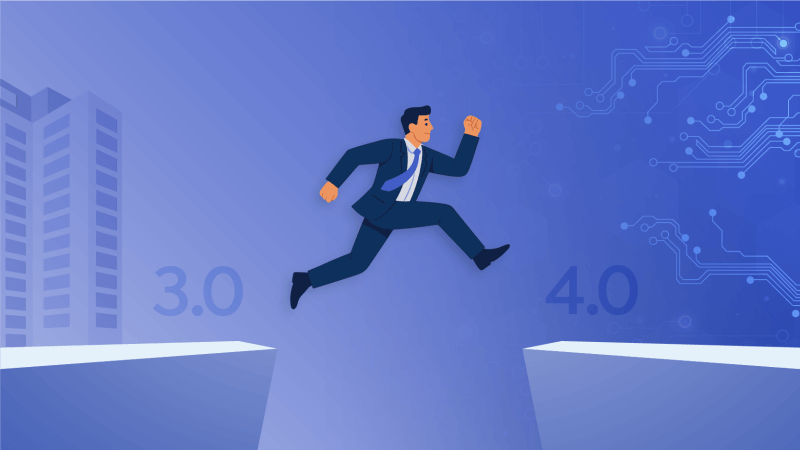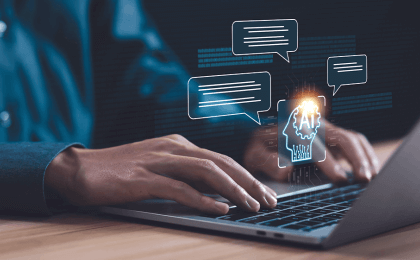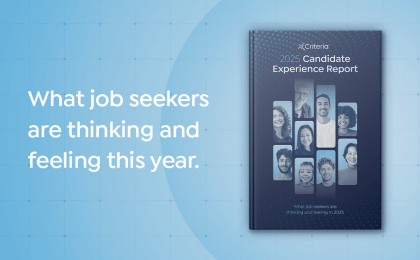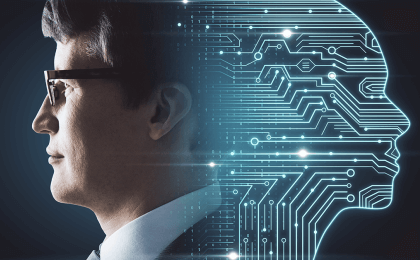We are on the cusp of a seismic shift in how we work. Driven by rapid advancements in AI, we’ve officially entered the era of Work 4.0, or the AI-Augmented Era, a new frontier that redefines the relationship between humans and machines in the workplace. But what exactly is Work 4.0, and how can organizations prepare for the future it’s ushering in?
Let’s take a closer look at the evolution of work, and what Work 4.0 means for hiring, talent development, and the future of human potential.
A Brief History of Work: 1.0 to 4.0
To understand Work 4.0, it helps to look at the eras that came before it:
- Work 1.0: The Industrial Revolution marked the dawn of mass production and mechanization. Labor shifted from farms to factories, and the modern concept of employment began to take shape.
- Work 2.0: The Corporate Era of the 1950s–60s introduced hierarchical organizational structures, 9-to-5 office jobs, and a formalized workplace culture that dominated for decades.
- Work 3.0: The Digital Age arrived with the internet boom, transforming everything from communication to commerce. Technology became essential to most job functions, and remote work began to emerge.
- Work 4.0: The AI-Augmented Era is defined by the rise of AI and its integration into virtually every aspect of work.
Defining Work 4.0: The AI-Augmented Workplace
Work 4.0 represents the beginning of a new era in which AI and humans collaborate to accomplish work. It’s not just about automation replacing routine tasks - it’s about augmentation, where AI helps unlock new efficiencies, drive innovation, and create entirely new roles that didn’t exist before.
In a Work 4.0 world:
- AI handles data-heavy, repetitive, or predictable tasks.
- Humans focus on creativity, empathy, critical thinking, and complex decision-making.
- Collaboration between people and intelligent systems becomes a core business competency.
- Organizations must evolve the way they hire, develop, and retain human talent to remain competitive.
Work 4.0 and Hiring: What Needs to Change
The shift to Work 4.0 calls for a radically new approach to talent acquisition. As tasks evolve, so too must the skills we prioritize in job candidates. Employers can no longer rely solely on technical experience or historical credentials when considering who to hire.
Instead, core human skills rise to the forefront. According to a 2025 report from the World Economic Forum, some of the most important skills include:
- Analytical thinking
- Resilience, flexibility, and agility
- Leadership and social influence
- Creative thinking
- Motivation and self-awareness
- Technological literacy
- Empathy and emotional intelligence
Hiring for these qualities means going beyond resumes and gut instincts. Talent leaders need tools that are purpose-built for this new era, such as:
- Scientifically validated assessments to measure skills and potential.
- AI-powered interview scoring for fairness and consistency.
- Bias-reducing technologies to ensure equitable hiring decisions.
- AI-detection measures to distinguish authentic candidate responses from those generated or coached by AI tools.
Because while AI can enhance candidate presentation, it can also mask true capabilities. HR leaders must rise to this new challenge.
Work 4.0 and Talent Development: Human Potential, Reimagined
Once hired, employees in the Work 4.0 era will require ongoing support, upskilling, and adaptability. Companies that want to thrive must prioritize:
- Continuous learning cultures
- AI-integrated performance development tools
- Personalized training pathways
- Coaching and mentorship programs focused on human strengths
Retention strategies should focus on nurturing the human side of work, where employees feel valued, capable, and prepared for what’s next. This is where Work 4.0 really shines: empowering people to do more meaningful, impactful work with the help of intelligent tools.
How to Prepare for Work 4.0
Here are some steps organizations can take today to prepare for (and lead) the Work 4.0 transition:
- Embrace AI, but not blindly. Choose tools that enhance decision-making, reduce bias, and elevate human judgment rather than replace it.
- Refocus hiring strategies. Screen for potential and core human skills, not just hard skills and past roles.
- Invest in learning and development. Encourage skills-based hiring, internal mobility, micro-certifications, and mentorship programs. (Source: World Economic Forum).
- Adapt to AI-savvy candidates. Be prepared for candidates using AI in resumes, cover letters, and interviews - and use structured methods to evaluate substance over style.
- Build a human-first workplace. Use AI as a partner, not a substitute. Double down on empathy, connection, and purpose.
We’re Just Getting Started
Work 4.0 isn’t a trend; it’s a transitional moment for the way we work. And while the full implications of this new era are still unfolding, one thing is clear: organizations that invest in the human side of the equation will lead the way.
By embracing the partnership between humans and machines, redefining how we hire and grow talent, and preparing for constant change, we can build a better future of work – together.
Welcome to Work 4.0.





